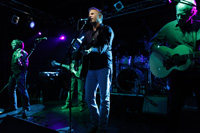| | | |
Archive
| « October 2009 » |
|---|
| Mo | Tu | We | Th | Fr | Sa | Su |
|---|
| | 1 | 2 | 3 | 4 | | 5 | 6 | 7 | 8 | 9 | 10 | 11 | | 12 | 13 | 14 | 15 | 16 | 17 | 18 | | 19 | 20 | 21 | 22 | 23 | 24 | 25 | | 26 | 27 | 28 | 29 | 30 | 31 | |
|
| | | |
|
|
|
|
|
|
|
31 October 2009 | Views: 4130 | Comments: 0 |
|
|
 Everyone in Europe and in almost all other parts of the world knows Kevin Costner, one of the few American top movie stars who is known to be interested not only in the American way of life but is equally attracted to foreign cultures and peoples. He had proven this in producing in 1994 an ethnologically valuable documentary about Rapa-Nui, a small volcanic island in the southern Pacific Ocean and the most eastern Polynesian settlement, which had been annexed by Chile in 1888 and named Isla de Pascua, Easter Island. Famous for its “moais”, monumental statues of volcanic rock and other natural materials depicting humans, such as the most famous seven of them called Ahu Akivi. Rapa-Nui is also famous for its unique hieroglyphic letters, in part deciphered by German ethnologist Thomas Barthel. Everyone in Europe and in almost all other parts of the world knows Kevin Costner, one of the few American top movie stars who is known to be interested not only in the American way of life but is equally attracted to foreign cultures and peoples. He had proven this in producing in 1994 an ethnologically valuable documentary about Rapa-Nui, a small volcanic island in the southern Pacific Ocean and the most eastern Polynesian settlement, which had been annexed by Chile in 1888 and named Isla de Pascua, Easter Island. Famous for its “moais”, monumental statues of volcanic rock and other natural materials depicting humans, such as the most famous seven of them called Ahu Akivi. Rapa-Nui is also famous for its unique hieroglyphic letters, in part deciphered by German ethnologist Thomas Barthel.
|
|
|
|
|
|
Jügen Boden, Germany, Photo by Polodrome (Jüchen) |
|
|
|
|
|
|
